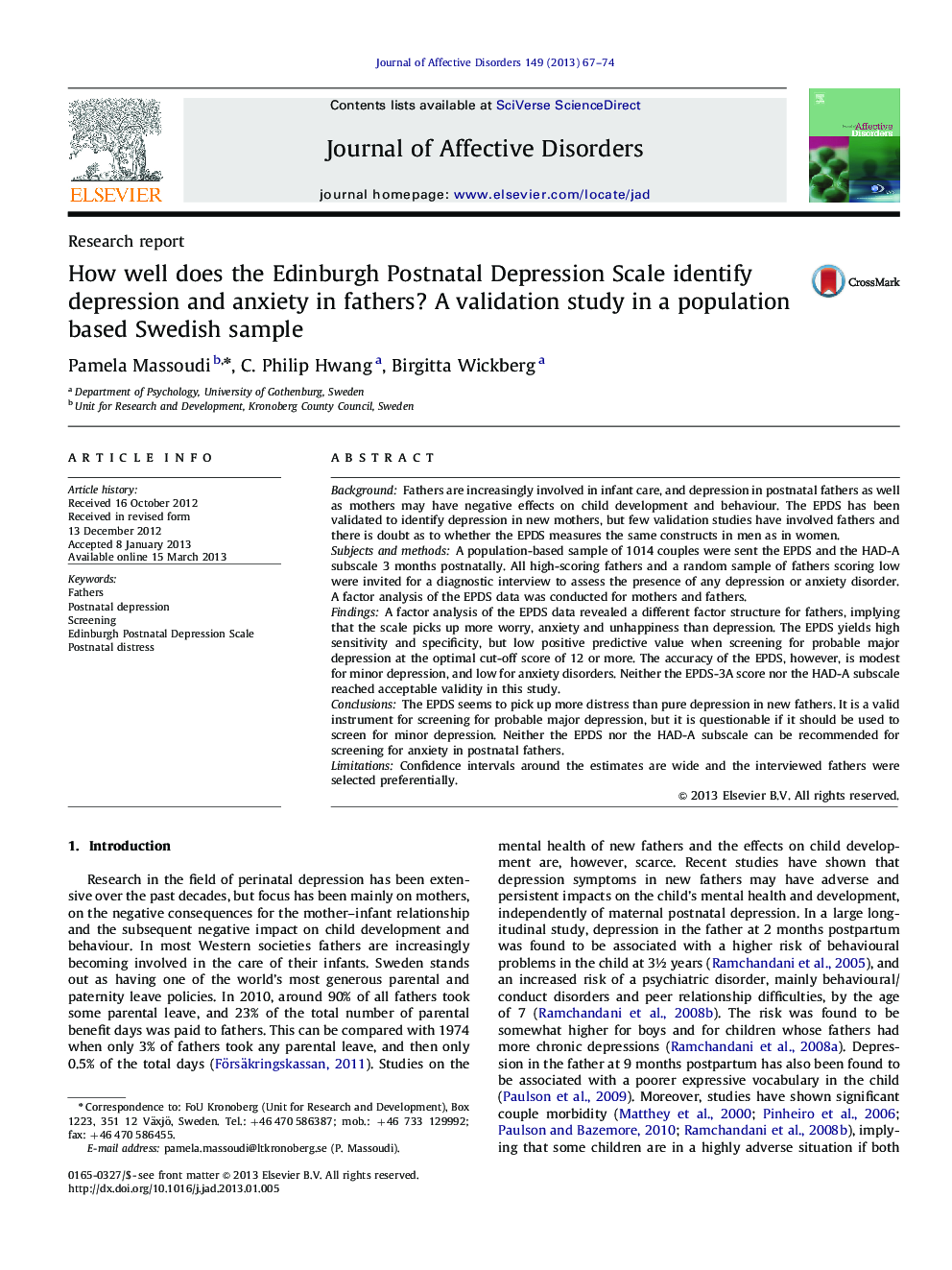| Article ID | Journal | Published Year | Pages | File Type |
|---|---|---|---|---|
| 6234568 | Journal of Affective Disorders | 2013 | 8 Pages |
BackgroundFathers are increasingly involved in infant care, and depression in postnatal fathers as well as mothers may have negative effects on child development and behaviour. The EPDS has been validated to identify depression in new mothers, but few validation studies have involved fathers and there is doubt as to whether the EPDS measures the same constructs in men as in women.Subjects and methodsA population-based sample of 1014 couples were sent the EPDS and the HAD-A subscale 3 months postnatally. All high-scoring fathers and a random sample of fathers scoring low were invited for a diagnostic interview to assess the presence of any depression or anxiety disorder. A factor analysis of the EPDS data was conducted for mothers and fathers.FindingsA factor analysis of the EPDS data revealed a different factor structure for fathers, implying that the scale picks up more worry, anxiety and unhappiness than depression. The EPDS yields high sensitivity and specificity, but low positive predictive value when screening for probable major depression at the optimal cut-off score of 12 or more. The accuracy of the EPDS, however, is modest for minor depression, and low for anxiety disorders. Neither the EPDS-3A score nor the HAD-A subscale reached acceptable validity in this study.ConclusionsThe EPDS seems to pick up more distress than pure depression in new fathers. It is a valid instrument for screening for probable major depression, but it is questionable if it should be used to screen for minor depression. Neither the EPDS nor the HAD-A subscale can be recommended for screening for anxiety in postnatal fathers.LimitationsConfidence intervals around the estimates are wide and the interviewed fathers were selected preferentially.
